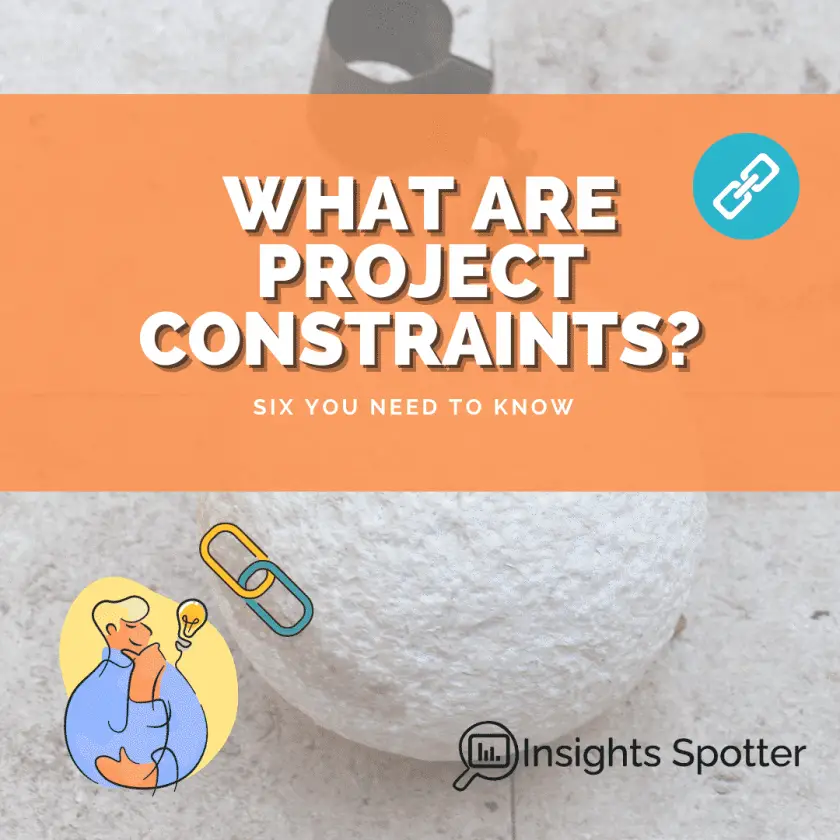What Are Project Constraints? Six You Need To Know
All projects are affected by multiple constraints. Therefore, as a project manager or project team member, you are dealing with them every day. Identifying and understanding constraints and carefully managing them could be the difference between the project’s failure and success.
Project constraints are limitations and risks that could impact quality, overall results, and ultimate project success. There are three primary constraints that most project managers would consider immediately, which are time, scope and cost. Yet, closely linked are also quality, resources and risk.
We have identified the main constraints. Yet, we need to understand them a bit more to know how to deal with them. Thus, I will explore each and show you how it is always a balancing act for a project manager through examples. Hence, we will look into buying a flat or building a product.
1. Why Cost Is A Project Constraint?
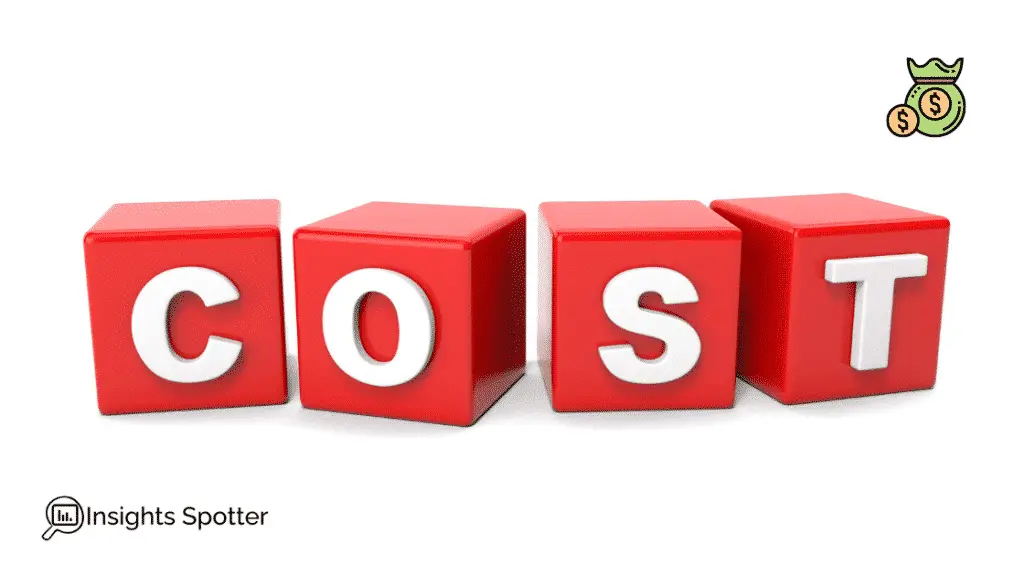
With some exceptions project will need a budget. You will want to be careful as much as possible while defining your costs, considering all known expenses, plus including some buffer. Out of all six constraints, we will discuss money is the hardest, most sensitive and difficult to adjust when you are in the middle of the project. It is more likely that you will be forced to adjust some other constraints if you exceed the budget.
The curious thing is that project managers in traditional project management need to balance between overspending and underspending. The latter happens more often than you think. Organisations usually plan their budgets yearly. Hence, if you underspend before year-end, then you will lose your funds. To spend the money team might rush, which will result in less than the optimal result for the organisation.
Cash is the lifeblood of companies, and project management should maximise the value gained from investments in new initiatives.

2. Why Scope Is A Project Constraint?
The scope is the boundaries of the project. It includes items the project and organisation are trying to achieve. You will find not just deliverables in scope but also processes used to produce them.
One of the scariest words for a project manager is “scope creep”. The term highlights common issues with the project. Typically, the scope is defined at the beginning of the initiative and sign-off by sponsors. The plan is prepared to complete items in scope, and while executing the project, you will get stakeholder trying to add new items to the project. Yet, the project is constrained by our six elements, which means that something will have to give. Project managers have to be very careful and defend the scope with all the might they have.
However, if you are working in product creation or using Agile methods, “scope creep” is not just happening but is often expected and welcome. During the product creation process, you always learn about new market conditions or customer needs. Therefore, you would like to include new features and compare them against existing requirements. If a new feature is more important then what you originally planned, you would have it in the build. In this case, if you are not adjusting other constraints, the scope would be competing with itself.

3. Why Time Is A Project Constraint?
It takes time to complete any project. In a corporation, you must know when a team will complete the project, the value realised and resources available to be redistributed to other initiatives. Unfortunately, time is also the most challenging item to manage in the project and often results in missed deadlines or incompleted scope items.
To be excellent in this department, you need to plan your project carefully, have reasonable estimations, and align your resources, so they are ready to start when required, which means accounting for a holiday or overlapping priorities. Plus, you should add some buffer because you will always need it.
Agile project management works with time slightly different than traditional project management. On the very high-level, you would have an overall deadline for the initiative and methods to ensure you have done as much as possible important work by that date or until the product is reasonably ready to go for Beta testing or to the market. Of course, depending on the selected frameworks, time management may change.

4. Why Quality Is A Project Constraint?
Quality is closely linked with the Non-Functional requirements of the project. You can deliver a feature or solution, but it may not meet the required standards or predefined criteria by the sponsors or stakeholders to operate effectively. There is no use from a website that loads one page in 10 min. So, the business might define quality criteria to have page loading in 1-3 seconds. You may also have some other Non-Functional requirements such as availability, reliability, and maintainability to consider when building your solutions.
However, for a larger product, you would also consider Functional Requirements. If you are asking for an accounting system and it cannot add up values for you, then a business cannot use the tool. Therefore, to maintain a project’s quality, a team needs to address all requirements, solve arisen problems and achieve the objectives.
If you would like to learn about the differences between Functional and Non-Functional requirements and get more examples, check my other post: NON-FUNCTIONAL VS FUNCTIONAL REQUIREMENTS, HOW TO BE SUCCESSFUL?
Often the quality is looked after not just by a project manager and the team, but also by Quality Assurance (QA) or Testing team. They would go through all defined quality criteria and ensure that the solution, feature or product does not fall short from what sponsors would call usable.
You might have heard about the concept of triple constraint represented in a triangle (like in the picture), usually time, cost and scope. In the middle, you have quality. Sometimes quality and scope can be interchangeable in depictions. These work together because if you are running late and have no money left, you can still manoeuvre with quality and scope to deliver most or all the features. Quality might be affected if you could not do all the testing but can provide features with caveats. Otherwise, you can reduce the scope and remove some features.

5. Why Risk Is A Project Constraint?
Risk is an internal or external event that could negatively affect project outcome. One of the keywords is “could” in that sentence. Every risk event has a probability attached to it, and together with the impact on the project, it could be rated low, medium or high. Depending on your stakeholders and the nature of the project, you would be preparing risk management strategies.
Before the project starts, you need to agree on tolerance levels with your sponsors and senior stakeholders. Say they are risk-neutral, then starting to manage risks from a medium level would be appropriate. The low-level risk you would just accept if they occur.
There could also be a situation that if a significant unacceptable risk event has been identified and the project manager cannot manage the risk so to mitigate or transfer it, then the business might need to close the project.
If you would like to learn more about Risks & Issue management, check out the PMI post: Risks vs issues
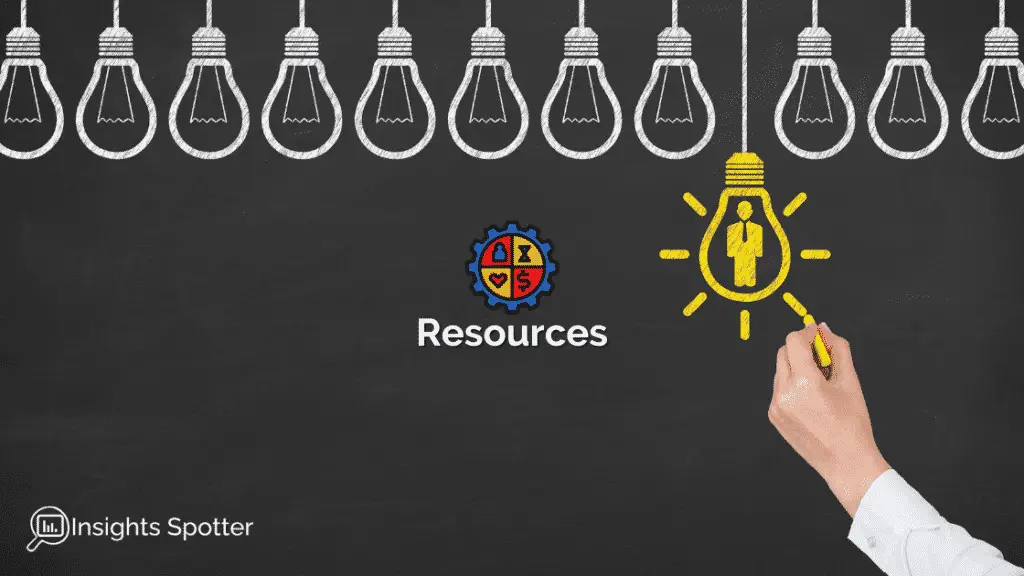
6. Why Resouces Are Project Constraint?
Resources can be pretty much everything that a business is using to operate and execute projects. These could fall into:
- Physical,
- Financial,
- Human,
- Know-how,
- Reputation.
Of course, not having the right resources will prevent you from even starting the project. Suppose we go back to building a website example. Say you need to link your website to the internal business database. If you do not have developers, you might need to hire those. If you do have the right team, still you will need to pay a salary.
However, a business will have a developer on hand when embarking on such a project more often than not. In that case, the main problem for a project manager is to make sure that the developer is available on the exact period that will allow the project to be delivered on time.
If you like to read more about business resources that impact project, check out my post 5 BUSINESS RESOURCES TO FOCUS ON FOR VALUE & SUCCESS. You will learn how resources could represent strength and weaknesses for organisations and projects.
Why Time And Cost Are Critical Constraints In Project Management?
Before we jump into our example, it is worth mentioning the relationship between time and cost first. You see, these two happen to be easiest to measure. Therefore, when a project goes sideways with missing deadlines or going over budget, sponsors or stakeholders will stress the most.
It is worth adjusting other constraints first, like quality or scope, before suggesting to change time or budget as a project manager. The strategy would result in smoother conversations.
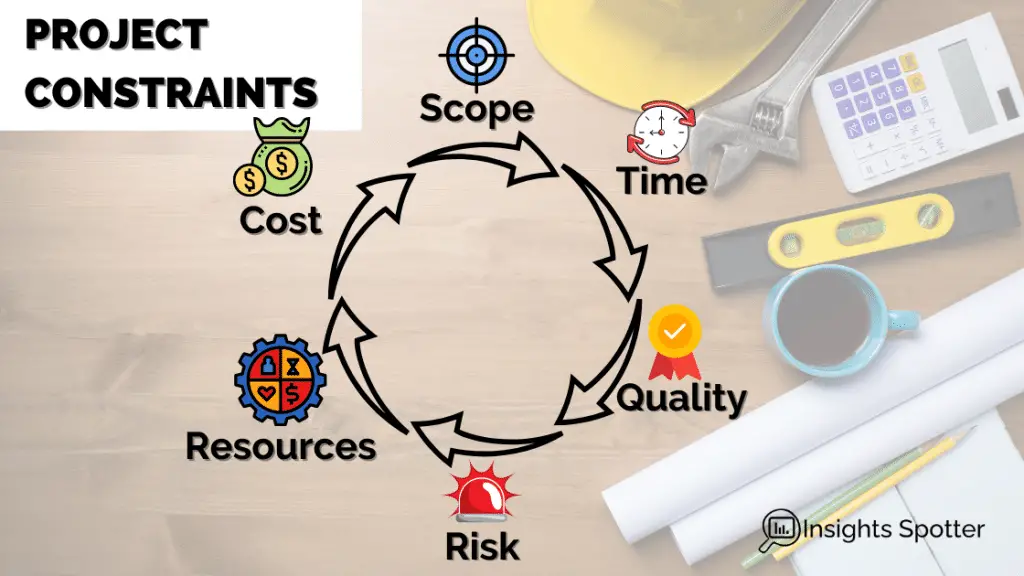
How Are Project Constraints Interrelated?
Managing project constraints is always a balancing act because you do not have infinite resources. In particular, time, scope and cost tend to compete with each other and are regularly depicted as a triple constraint with quality in the middle. Let’s explore these tensions through an example.
Suppose we are buying a two-bedroom flat. If this is your first flat, it could be a big project, which will require a lot of research and planning. Many questions need answering before we can move forward, such as:
- Resources: How much money to save for a deposit?
- Cost: What is the best price for a flat?
- Time: How long to look for the best deal?
- Scope: How many areas in the city to investigate?
- Risk: If apartments are overpriced at the moment?
- Quality: Should I buy a new or old flat, which needs refurbishing?
We can see that they also link to our six constraints discussed in the post. Let’s look into some scenarios below to explore constraint relationships.

What If Project Manager Adjust Time?
Say you do not wait and you want to cut on time. You decide to save less on a deposit, reduce your originally planned resources, and expose yourself a bit more to interest rate fluctuation risk by borrowing more. Plus, the bank will increase your starting interest rate as well due to higher risk.
Now, you are unwilling to consider a single bedroom flat, thus reducing your scope or increasing your cost (i.e. price). Then you end up with only one outcome, which is reducing your quality. You will either need to buy a smaller flat or consider an older one, which requires refurbishment.
What If Project Manager Adjust Cost?
Suppose you would like to decrease the cost of your project and pay less for the flat. What are your options and related risks?
So, you could have a flat further away from the city where prices tend to be a bit higher. In London’s case, where I live a lot higher! Or you may finally choose to go for a one-bedroom flat. Both are scope elements for the project. However, for the sake of argument, let’s assume that neither is a good option.
Then you could spend more time looking for the best deal in the market. Maybe if it is an investment, you can wait for the next market correction, which happens every 5-10 years. But in your case, you are planning for an increase in family, and you need that two-bedroom flat in one year. Thus, your deadline is relatively fixed.
Your resources are limited, and you only have a deposit for a moderately priced house. Plus, you see no way to increase it in a short period; thus, you cannot pay more upfront and reduce overall expense due to higher interest.
If you like to change your price but cannot increase the timeframe or change scope, you are left with reducing quality. We can look for a two-bedroom flat, close to the city, but it will either have to be smaller in size, have lower quality material or be an older built development, which will require some investment in the future to renovate. All three have related higher risk. One could be that if you buy an older built flat, you might later find that investment needed in the future is much higher due to lousy plumming.
There is no such thing as a free lunch.
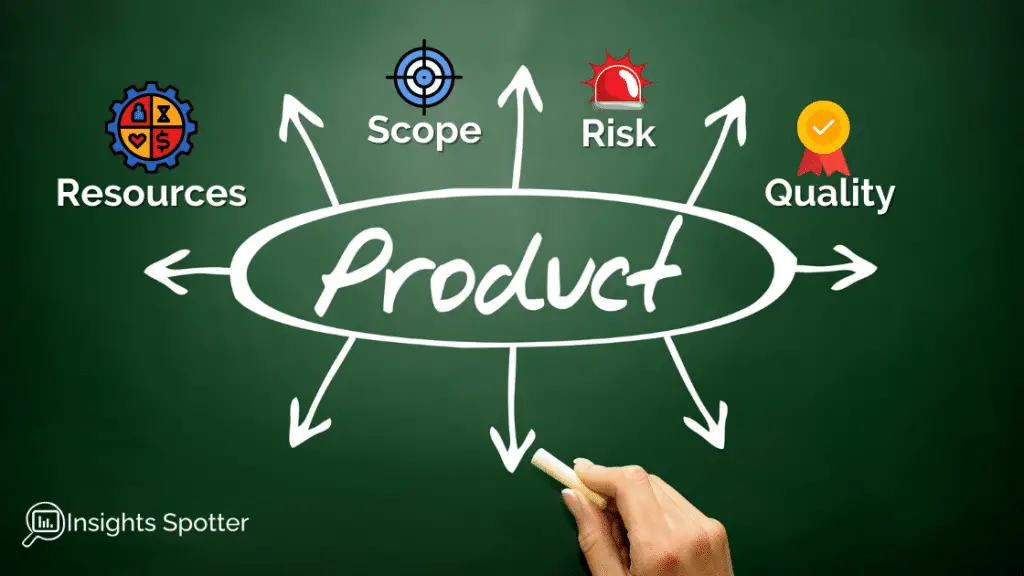
How To Manager Constraints Like Scope, Quality, Risk or Resources?
Say you would like to create a new product. As a project manager, you will need to consider the most critical attributes of the project. As you have seen from previous examples, if you need to adjust any project constraints, something else will have to give. Thus, how can you achieve it?
Of course, the goal is to do it just right. You would like to offer a product with sufficient user experience, i.e. quality, hold just the right level of new features to interest users, i.e. scope to test viability in the market and reduce risk. Yet, you do not want to spend all your budget or get developers to work on unnecessary features.
To achieve such a result, the project manager or business will have to continuously manage all four constraints scope, quality, resources, and risks.
Agile frameworks help the business to achieve such a result. If you take Scrum every sprint, usually two weeks, you will consider all constraints and decide the essential elements to move forward with the solution. Maybe you will spend more time on features, increase the quality of existing ones or completing more beta testing. The point is that you will be prioritising the essential elements for the success of your project.
Check out my posts on agile and frameworks you can use Agile Blog Post.
Project Constraints Conclusion
I hope you have enjoyed diving into project constraints. These are critical considerations to make for any initiative. Sometimes we may think about them unconsciously, but taking a strategic approach will likely give better results and increase your project’s success.
There is always a balancing act between each, and sometime you will need to change a few simultaneously. Deciding which ones to adjust to in any given situation will come with experience. Yet, concentrating on primary initiative objectives will help to focus your attention. So, good luck!
Subscribe to our newsletter!
 ABOUT ME
ABOUT ME
I am an experienced ex. Business & Data Analyst and now a Project Manager with multiple years of experience gained in several international companies.
These days, business problems require data crunching and telling stories to make the right decisions. Simply put, business stakeholders need insights into their projects and deliveries.
This is where I come in. I have learned and applied Python, Power BI, SQL and Excel to analyse and present data. Also, I gained experience in Project Management and Business Analysis. So, I can not only spot insights but execute business decisions. Moreover, I can teach you as well. Read More
Best Books








Latest Blog Posts
- Navigating Project Management in a Matrix Organization: Challenges and Solutions
- Using Artificial Intelligence’s Power in Agile Project Management
- Sustainable Project Management: Trends, Tools, & Strategies
- Unlocking Strategic Value: How NIST CSF 2.0 Shapes Project Choices for Better Outcomes
- Cybersecurity Project Management: Protecting Your Digital Frontier
- What are the Different Types of Planning in Project Management?
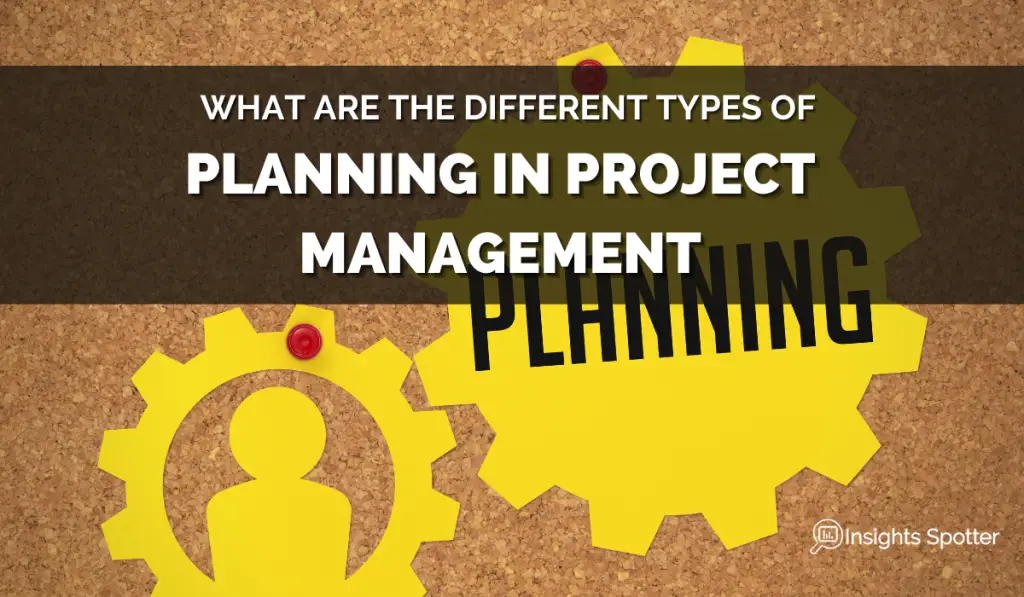
Need Project Manager’s Help!?
Check out the Fiverr marketplace if you do not have time to run your own projects or just need extra help. They do have multiple project professionals, including project managers. Maybe you will find just the right fit to take some burden from you. I have used Fiverr in the past. The prices are also not too bad. If you seek PM via the corporate route, it will be easily 5x the price.

